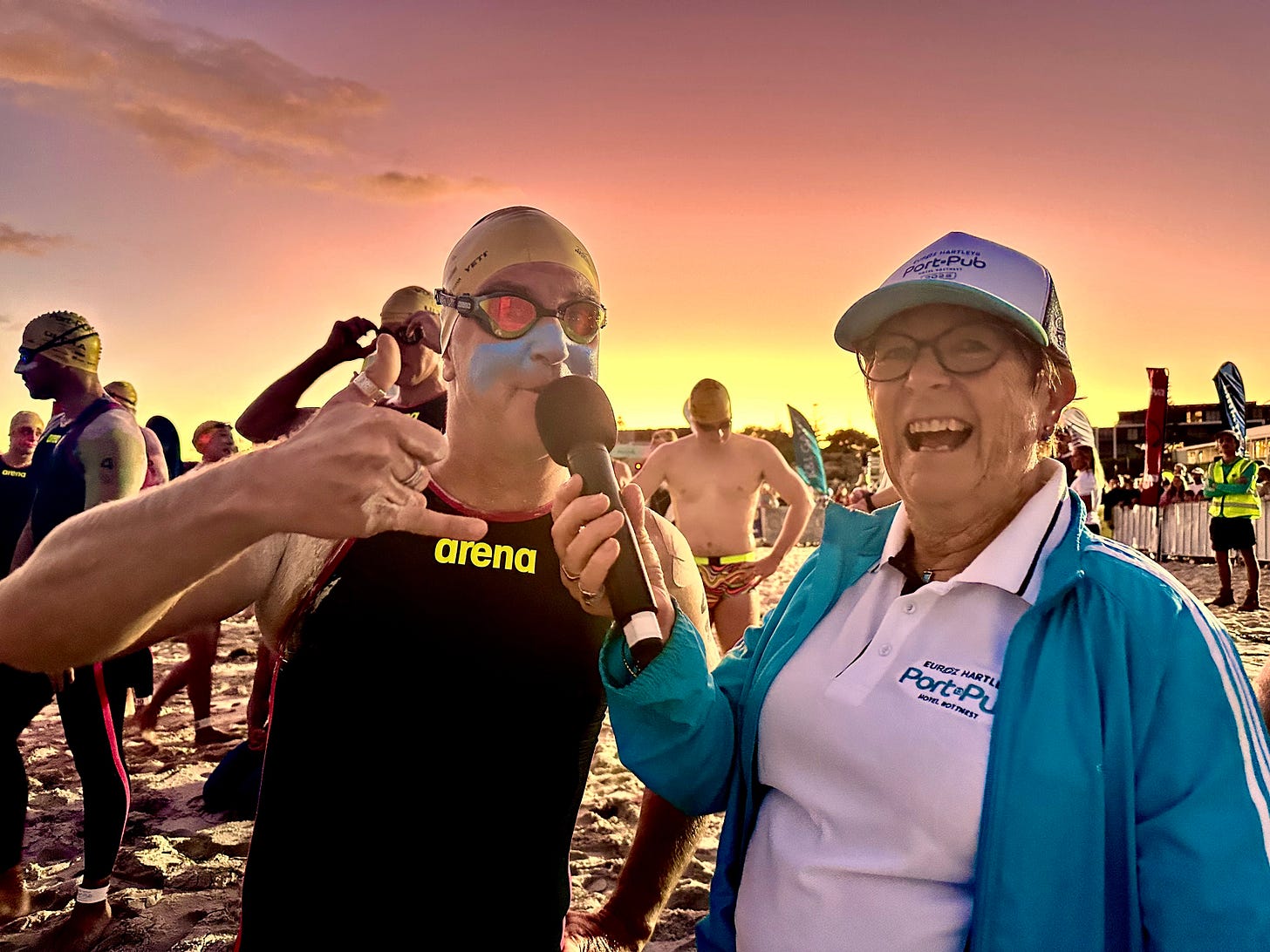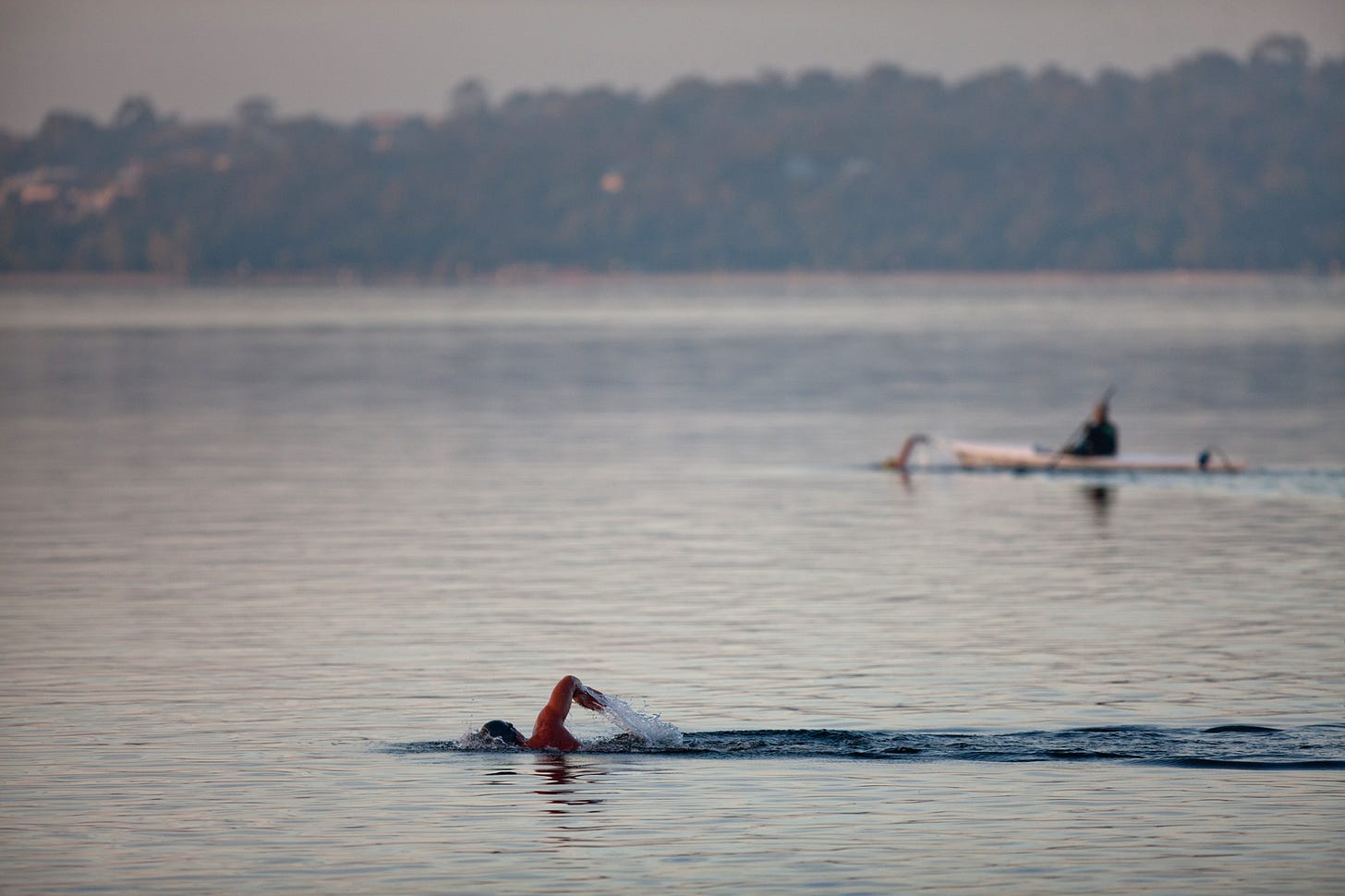🔹The More You Swim, The More You Need To Swim...
Exactly how many swim sessions do you need to make improvement?
Hey Swimmers
When we got our first family dog, Sandy, in 2016—a wiry little Border Collie—everyone warned us:
“He’ll have endless energy. The more you walk and run him, the more he’ll want to be walked and run!”
And they were absolutely right. As Sandy got fitter, his need for stimulation and exercise only grew. It felt like his whole sense of wellbeing depended on it—he just seemed happiest when he was out there running, moving, being free.
Effort vs Reward
Humans aren’t so different. As we get fitter through regular training, we often need to do more just to maintain that level, let alone improve. And yet, unlike Border Collies, we have practical ceilings: work, family, fatigue, motivation, and the simple fact that we can’t swim all day, every day. So when swimmers ask us,
“How many sessions do I need to make an improvement?”,
we always respond with a smile:
“More than you’re doing right now!”
That may sound flippant, but it’s surprisingly accurate. If you're swimming twice per week, increasing to three will likely bring strong gains. If you're already consistently doing three, a fourth might be necessary to progress further—but the returns start diminishing. There’s a ceiling to how much time and energy you can realistically invest.
Holding Off Old Father Time
When I think about my own swimming, and how—at 46—I’m still able to swim fairly similarly to how I did back in the late '90s during my time with the British Triathlon squad at the University of Bath, I’d put it down to two main things:
I’m only swimming these days and not biking and running, so I can focus purely on the swim. I can be competitive on about 6-8hrs of training per week as opposed to the 15-20hrs I’d need if I went back to triathlon.
over the last two years, I’ve added in a couple of additional (short) swims each week that have made a real difference - my pièce de résistance if you like - and I’m tracking the effects of these and being motivated in return by the improvement; a win-win if you like. Keep reading and I’ll detail them at the end so you can try.
The Building Blocks of Performance
This is why we encourage most swimmers to establish a sustainable baseline—perhaps 2–3 sessions per week—then build intensity and frequency in 6–10 week blocks when preparing for a race or personal goal. You’ll be surprised how little extra work you need to do at first to nudge you above your baseline plateau, but as this starts to then become the new ‘norm’, so too is additional work required to carry you further.
We find that this process of progression though allows for attainable windows of focus that are sustainable for just long enough to get you prepared for an event or to set yourself your own personal goal of,
“what am I capable of with a little extra attention and drive?”
What the Mind Can Conceive the Mind Can Achieve
This concept is beautifully illustrated by the Fitness Curve within the Swim Smooth GURU:
Personally, over the last two years, I’ve gone through six “mini peaks”: blocks of 6–8 weeks of hard work followed by events, then returning to a more manageable maintenance routine (which is where I’m at right now):

It’s tempting to want that fitness curve to keep climbing indefinitely—but the reality is, as with Sandy, the more you do, the more you need to do to sustain or progress.
The Fitness Curve in the GURU uses three lines:
Blue (Fitness) – This is your Chronic Training Load (CTL). It builds slowly and takes about six weeks for any one session’s value to fade.
Pink (Fatigue) – Your Acute Training Load (ATL). This reflects the immediate fatigue of training and lasts around 5–7 days, depending on age, training history, and lifestyle.
Green (Form) – This represents how fresh you are. It improves as fatigue drops, which is why tapering before an event is key. But taper too much, and your fitness can dip as well.
Getting this balance right is crucial. If your Form is trending positively and sits above zero on race day, you’re in a great place to perform.
Ultimately, the Fitness Curve is an incredibly motivating and insightful tool. I check mine every day and love to see my efforts rewarded graphically. It doesn’t replace how you feel day to day, nor can it account for stress from work or home life. But it helps you see trends, train with purpose, and understand that specificity is key. Just because your run form is flying doesn’t mean your swim is too!
*Your Pièce de Résistance: Those Two Magic Swims
So, what are these two magic sessions that I’ve added to my own schedule and how can they help you?
Well, firstly, they both take less than 30 minutes. This is a major bonus for those of you who are time-crunched like me.
Secondly, they involve no real equipment aside from a watch to record your swim and a Tempo Trainer. The Tempo Trainer is not strictly necessary, but if you’re looking for one, you’ll be pleased to know we now have them back available online for 30% off here.
Lastly, the timing of these swims seems to be really important for two separate reasons, let me explain:
Swim 1:
Wednesday morning’s at 07:24am. Yes, I know, how nerdy - 07:24am! I have precisely 30 minutes between the post-session feedback with our swimmers at the end of our Red Mist Endurance Squad session and the start of our Fresh ‘n’ Fruity CSS (Threshold) session to get a swim in. I’ve worked out that I can fit 2,000m into this slot. The time pressure - whilst initially challenging - has perpetuated into a little game that I play each week. Knowing I have to get it done in a set time prevents any faffing. An ideal way for you to do something similar might be on your lunch break. It’s a no fuss swim. Just get in and swim. I set myself the minimum pace goal of 1:30/100m (meaning I’ll be finished at the latest of 07:54am). Sometimes I feel great and push the pace, other times not. But I try not to over-think it. It is what it is. To give me an extra little nudge, I’ll set my Tempo Trainer in Mode 2 to my minimum pace and have it beep at me every 1:30/100m. For yourself, set your minimum pace as about CSS +10s/100m. Ideally, you’ll get a little bit further ahead of the beeper each 100m. This swim would be the equivalent of a Tempo Run, and those of you who run will know all about how effective they are when done regularly!
Swim 2:
This is also a swim of about the same duration, but on a Thursday morning before taking the kids to school and walking Sandy in Bold Park (for a little “tree therapy” for both of us). It’s an “out and back” ocean swim (by myself with my SharkBand on). I don’t use anything to really give me feedback here - it’s another “get in and swim and see how you feel” kind of affair, but as it’s in my favourite environment (ocean) at my favourite beach (Cottesloe), it’s a great one for the soul and to log another couple of kilometres. The key with this one though is that it acts like a warm-up swim for a harder, more structured CSS session of ~3km that I do in the evening. It’s my only double-swim day.
Your Take-home Points
So, keep it consistent, stay smart, and remember: sometimes, less is more—but often, a little more is just what you need when peaking for an event and monitoring this with the Fitness Curve in the GURU is a great way to visualise exactly where you’re at with your swimming at any given time.








